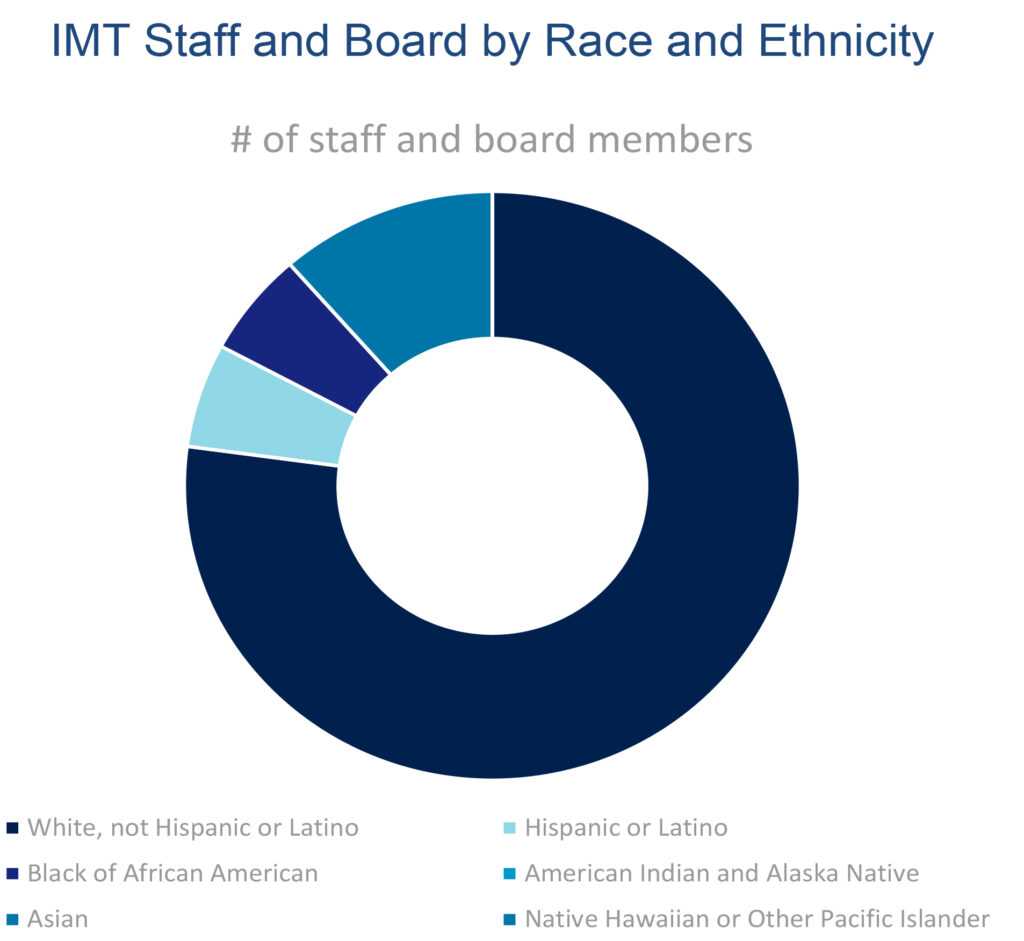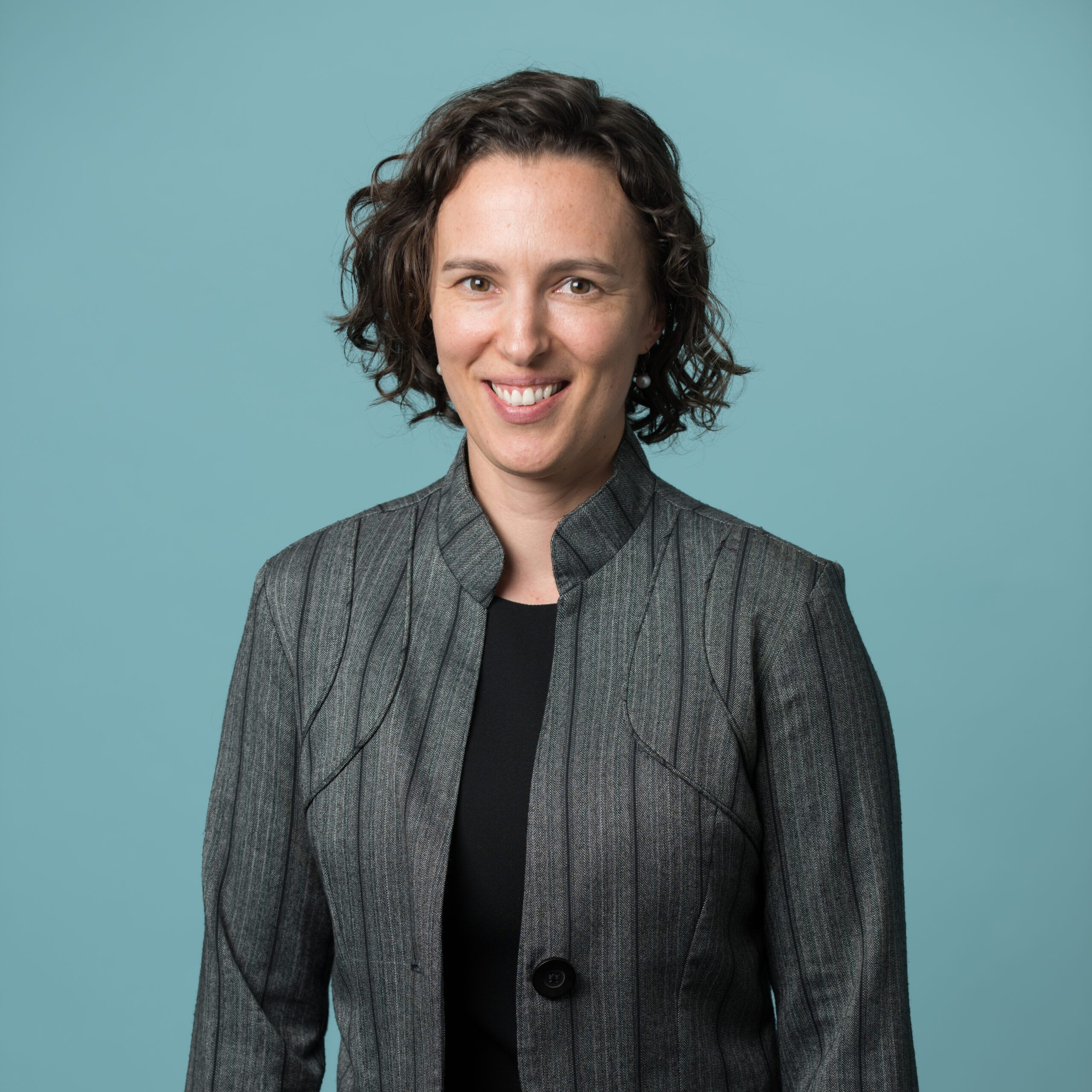As the executive director of IMT, I spend a lot of time thinking about transformational change. Our focus is catalyzing demand for significant, long-lasting change in the buildings in which we live, work, and play, recognizing the critical role these structures play in sustaining and improving the lives of the people inside them and the communities they are built in.
People across the country are demanding better from our companies, governments, communities, and more. IMT must be an active participant in this change. This month, I’ve looked at whether IMT is doing what we need to do in our own organization, and where we are upholding racist structures in our work influencing real estate, energy, and policy. We’ve talked about how, as an organization working in clean energy, we address the fact that climate change will intensify inequality—especially that already prevalent in communities of color—and that it will increase the number of people who are struggling for survival. And, as the COVID-19 pandemic continues to redefine our lives, how do we ensure that our businesses and policies ensure that buildings support thriving communities?
I was struck by a Washington Post article by Ayana Elizabeth Johnson published on June 3, titled “I’m a black climate expert. Racism derails our efforts to save the planet.” In it, Ms. Johnson calls on white Americans “who care about maintaining a habitable planet…to become actively anti-racist.” She highlights what we’re missing out on as a result of racism—the loss of talent in our workforces and the opportunity for a broader and more effective coalition of people working to advance climate action.
What does anti-racism look like in the healthy building and energy sectors, and in policy addressing building performance? What does it look like for IMT?
Buildings are the place where our human systems, services, and physical infrastructure come together. We rely on buildings as our homes, schools, places of work, and community. What purpose do they serve, and who are they designed to benefit? What we build, where we build, and who has access to spaces are decisions that impact quality of life. These decisions are often not equitable. Who accesses clean energy and efficiency programs? In many parts of the country, program funds go to support those who have time to access them rather than those who most need them to improve their home or building, and they are incremental and not transformative improvements. IMT makes choices in our program work: When we work to improve the largest buildings in the biggest cities to cut as much carbon as possible for the benefit of the planet, it can also remove focus on the buildings where many people live or work where improvements would directly impact lives and livelihoods.
Given that racism exists in how our workplaces, institutions, and decisions about public investment happen to make change, we must actively work to be anti-racist in the building and energy sectors. At IMT, we’ve identified specific actions we can take as an organization and via our partnerships – and I invite critique from our readers!
- IMT and our partners must focus programs and policies to increase investment in building and clean energy improvements in communities with the highest rates of pollution and energy cost burdens.
- IMT can support the development of community-driven buildings policy by advocating for more inclusive stakeholder engagement that allows government, business, and the community to align on needs and outcomes.
- Policymakers and companies must include—and actively track progress against—metrics for equity in the outcomes of efficiency, clean energy, and buildings programs.
- We must all work to expand access to healthy affordable housing and investment in building improvements that benefit the health of our communities. This includes re-examining how we approach investment and policy to improve building performance. What would it look like for a developer to focus truly on inclusive development? For a mayor or city councilmember to accept a community-influence decision on development, building repurposing, or light redevelopment? For community members to be active partners in building their community and its structures?
- Real estate and energy service companies must commit to and achieve measurable increases in diversity among staff, leadership, and in procurement processes. And consider what the role of the building and its performance in the community in which it is located.
As for our own organization, in the near term we commit to increasing diversity among our board, staff, and partnerships. We have a significant way to go here, and we commit to reflecting the diversity we wish to see in the fields that we operate in at the board, leadership, and staff levels. This is being measured internally each quarter. We commit to listening through our partnerships for the ways in which we must continue to shift our work to produce outcomes that represent and benefit a wider range of people—and we commit to taking action on what we hear.
Transformational change is never easy. As I noted earlier this year, I believe that disruption creates opportunity for growth. Consider how in recent months, as COVID-19 has upended our daily routines, we’ve rapidly adapted our lives and businesses. This ability to change and learn gives me hope. When it comes to dismantling systemic racism, it is on our profession—and its majority white population—to do the growing and heavy lifting for more equitable, transformative change. We stand alongside those demanding action and are committed to doing better.


